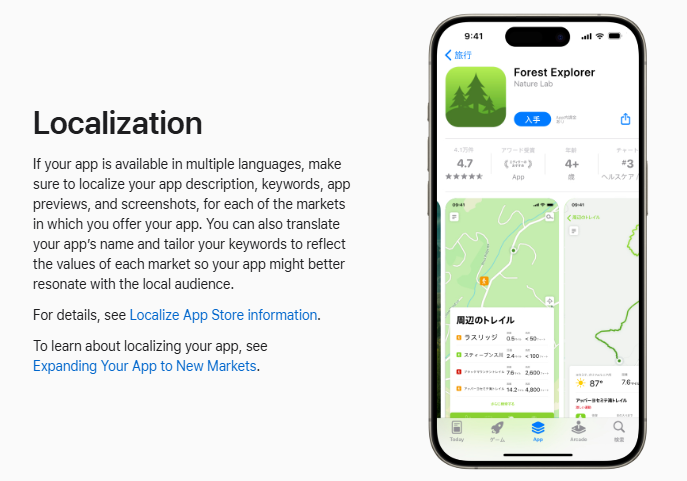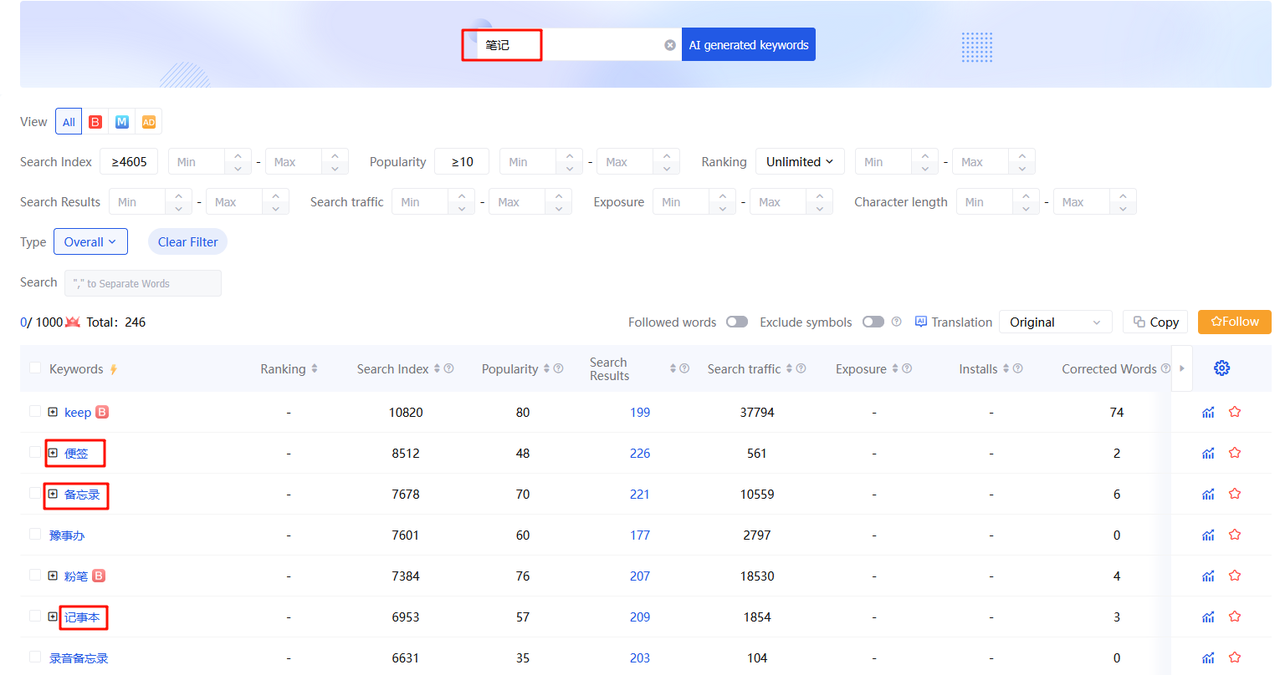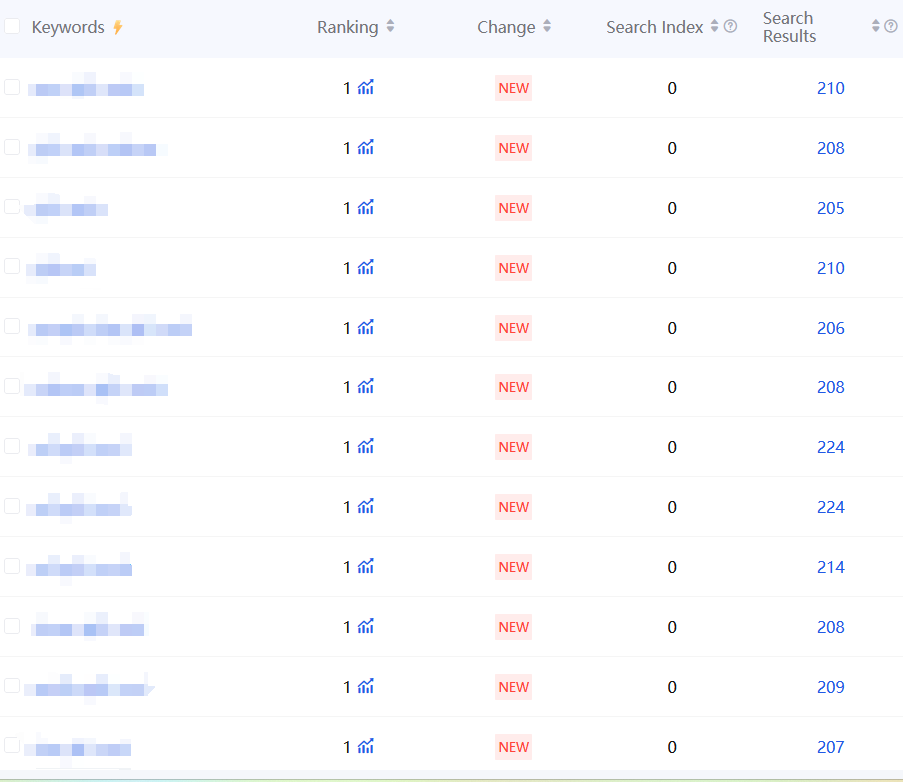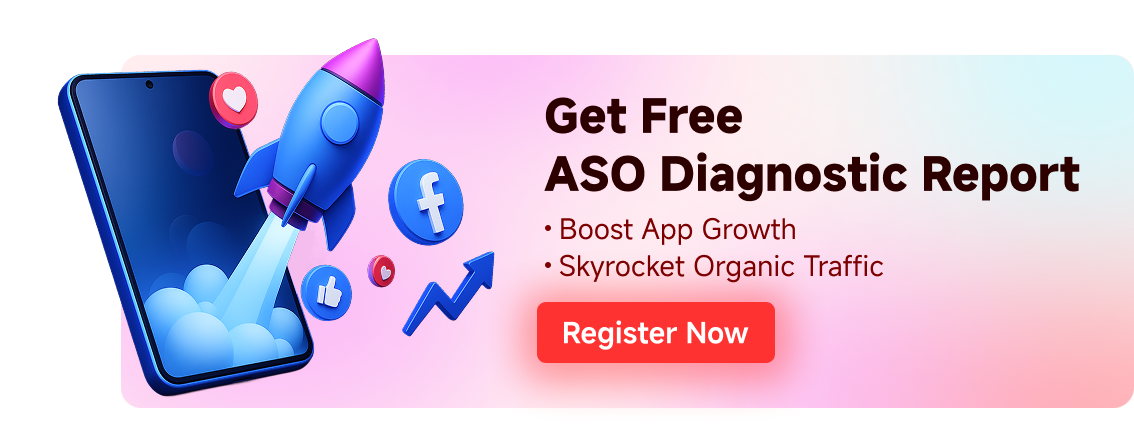Free consultation with ASO specialists
Doing ASO for the first time or have no idea how to carry out targeted optimization of your app?
We offer one-on-one customized services provided by app marketing specialists
Beyond Downloads: 7 Key Strategies to Boost App User Activation with ASO
2025-09-18
Why is ASO so important for user activation?
In today's app stores, App Store Optimization (ASO) has become a crucial strategy for developers to enhance app visibility and downloads. However, for the long-term success of an app, downloads are not the ultimate goal; what truly matters is whether users can successfully activate the app after downloading and convert into active users. Many apps lose a significant number of potential users due to low activation rates after gaining downloads, which is precisely the pain point faced by many developers. Through effective ASO strategies, we can not only attract more downloads but also improve user activation rates, ensuring that users actually start using the app after downloading. This article will share 7 key strategies to help you go beyond mere download metrics and comprehensively boost your app's user activation rate through ASO.
First, we need to clarify the core components of ASO. An effective ASO strategy is built upon a deep understanding of the app store ecosystem, and its core components can be summarized into the following key steps:

Optimize metadata to clearly communicate core value.
Metadata such as the app name, subtitle, and description serve as the user's first glimpse into the app and form the foundation of ASO. Optimizing these elements not only helps improve search rankings but, more importantly, clearly communicates the app's core value, attracting users who are a perfect fit and increasing their willingness to activate.
-
App name and subtitle
Including key feature words or terms frequently searched by your target users in the app name can help improve search matching. However, be sure to keep the name concise and memorable, avoiding keyword stuffing that might negatively impact user experience. Remember to make full use of the subtitle to supplement keywords and highlight your app's key features.
-
App description
App descriptionIt's the place to tell users a story and articulate the value proposition. When writing the description, you should incorporate relevant keywords to facilitate algorithm crawling (which is especially important for Google Play, as its description field is indexed by search engines), while keeping the language concise and vivid, avoiding verbosity and obscurity. You can adopt a pain point + solution structure to resonate with users and spark their interest in using the app after downloading.
-
Keyword selection
Choosing keywords that are highly relevant to the core features of your app, have moderate search volume, and relatively low competition is a crucial step in metadata optimization. By leveraging ASO tools to analyze user search habits and competitor keyword strategies, you can identify long-tail keywords and high-conversion terms, and strategically incorporate them into your title, subtitle, and description. Avoid using overly broad or irrelevant popular keywords, as even if they drive downloads, mismatches with user expectations may result in low activation rates.
By carefully refining your metadata, you can ensure that your app conveys clear value messaging when discovered by users. When users clearly understand what the app can offer them upon downloading, they are more likely to open it and complete activation. This is the first step in improving user activation rates.
Building trust through user Reviews and Ratings
User Reviews and Ratings are important factors influencing users' download decisions and activation behavior. On app store pages, a high Rating and numerous positive Reviews not only attract more downloads but also enhance new users' trust in the app, making them more willing to try it out and complete activation.
Research shows that user Reviews and Ratings are important signals in app store algorithms; high Ratings and positive user feedback help improve an app's ranking in search results. This means that Review optimization itself is also part of ASO. At the same time, for users, Ratings and Reviews are the most straightforward form of social proof: if an app has a high Rating of over 4 stars and numerous genuine positive Reviews, new users will feel more confident downloading it and will have higher expectations when opening the app, making them more likely to complete the activation process.
To effectively leverage Reviews and Ratings to boost activation rates, you can take the following measures:
-
Actively obtain Ratings
Request users to provide Ratings at appropriate moments within the app. For example, when users complete a key task or have a positive experience, display a friendly prompt asking for Reviews. However, pay attention to frequency and timing to avoid disturbing users. Both Apple and Google provide in-app Ratings pop-up interfaces, which can guide satisfied users to submit Ratings directly within the app.
-
Reply to user Reviews
Whether the Ratings or Reviews are positive or negative, you should respond promptly and politely. For positive Reviews, express gratitude to make users feel valued; for negative Reviews, demonstrate your commitment to user feedback and your sincerity in making improvements. Publicly responding not only reassures the original commenter but also showcases your app team's professionalism and responsibility to other potential users, helping to build trust.
-
Analyze and improve the issues reflected in negative Ratings
Regularly read user Reviews to gather frequently occurring issues or suggestions. If many users mention that a certain feature of the app is difficult to use or has bugs, it should be fixed and improved as soon as possible. By continuously optimizing the product, negative feedback can be reduced, fundamentally improving user satisfaction and Ratings. Once the app quality improves, activation and retention rates among new users will also increase accordingly.
In short, a good reputation can significantly boost user activation rates. High Ratings make users more willing to give it a try, while positive Reviews and interactions help alleviate users' concerns about unfamiliar apps. By implementing review optimization strategies in ASO, you can not only enhance your app's credibility but also indirectly improve user activation and retention performance.
Have negative Reviews affected your conversion rate? We can help you efficiently manage user feedback, improving your app store's overall Ratings and trust. Contact AppFast customers to learn more.Negative Ratings OptimizationService.
Improve app performance and reduce activation churn
User activation rates are influenced by many factors, among which the performance and quality of the app itself play a decisive role. If users find the app runs slowly, crashes frequently, or has serious bugs after downloading it, they are likely to drop out during the activation process, even if ASO has successfully attracted them. Therefore, improving app performance and stability is an indispensable part of the ASO strategy.
App store algorithms have started paying more attention to quality metrics of apps. Technical factors such as app update frequency, crash rate, and loading speed all influence app rankings. More importantly, these factors directly relate to user experience: a smooth and stable app will leave new users with a good first impression, making them more willing to complete registration or start using it; conversely, poor performance may cause users to abandon the app at the very first launch, naturally rendering activation rates out of the question.
Here are some key points to improve app performance and reduce activation churn:
-
Ensure the app starts and responds quickly.
Optimize the app's startup time to avoid long white screens or freezes when it's first opened. If the app needs to load a large amount of resources, consider displaying a simple loading animation and gradually presenting the content, giving users the impression that the app responds quickly.
-
Reduce crash and error rates
Regularly test the application and fix known crash bugs. Pay special attention to issues that new users may encounter during their first use, such as errors in the registration/login process or critical features not functioning properly. Through continuous QA testing and user feedback channels, promptly identify and resolve problems affecting activation.
-
Optimize the installation package size and update experience
If the app installation package is too large, users will spend more time and data downloading and updating it, potentially leading them to give up. Consider using technologies such as dynamic modules or on-demand loading to reduce the package size. At the same time, provide a smooth update process to prevent users from uninstalling the app due to update failures.
-
Regularly update the app
Keeping your app "fresh" not only makes it favored by app store algorithms, but also shows users that developers are continuously maintaining and improving it. When releasing updates, highlight new features and improvements in the app store description to encourage existing users to return and let new users know that this is an active and constantly evolving app.
By implementing the above measures, we can create a high-performance and highly stable application, significantly reducing the likelihood of user churn during the activation phase. When users can smoothly experience the core features of the app after downloading it, their chances of completing activation and becoming long-term users will greatly increase.
Localization and language optimization to boost global user activation
If your app targets users across different countries and language regions, localization is one of the key strategies to boost global user activation rates. Localization not only involves translating the metadata of app stores, but also includes making targeted optimizations based on the cultural background and language preferences of users in different regions, thereby making your app more appealing and accessible to users worldwide.
In the ASO field, localization has long gone beyond simple language translation and now places greater emphasis on cultural adaptation. By 2025, top apps will not only translate titles and descriptions but also tailor visual assets and word preferences to different markets, and even optimize content by incorporating local festivals and trending topics. This "hyper-localization" strategy makes users feel as though the app was custom-made for them, significantly boosting download intentions and activation rates.

Specifically, you can start localizing ASO from the following aspects:
-
Language translation and keyword localization
Ensure that the app name, subtitle, description, and other elements in the app stores of each target market are written in the local language. When translating, pay attention to the correct use of professional terminology and colloquial expressions to make the content sound natural and fluent. At the same time, conduct keyword research for each language market to identify commonly used search terms by local users and incorporate them into the metadata. For example, "todo" in English corresponds to "tareas" in Spanish and needs to be optimized separately.
-
Localization of visual materials
The app's icons, screenshots, and preview videos should also take local culture into account. For example, the characters and scenes in screenshots can be designed to closely align with the aesthetics and living environments of local users. If there are dialogues or text in the preview video, they should be accompanied by subtitles or voiceovers in the local language. Some apps even create customized screenshots for different markets, highlighting features or usage scenarios that are of interest to local users, thereby improving conversion rates.
-
Cultural and Habitual Adaptation
Pay attention to cultural taboos and preferences in different regions. For example, colors and numbers have different meanings in various cultures, so you should avoid using elements that might evoke negative associations. Additionally, launching special events or updates tied to local festivals or significant occasions, and mentioning them in your app store description, can make local users feel more connected and valued. For instance, in Southeast Asian markets, highlight special features of your app during the Water Festival, while in European and American markets, emphasize activities related to Halloween.
-
Local user Reviews operations
Actively gather user Reviews from various language markets and pay attention to feedback from local users. Users in different markets may focus on different features. By analyzing local Reviews, you can more effectively optimize your app, enhancing local user satisfaction and activation rates. Additionally, respond to user Reviews in the local language to demonstrate your commitment to that market.
Through comprehensive localized ASO, your app will be able to overcome language and cultural barriers, attract more targeted users globally, and increase their activation rates. Remember, localization is not a one-time task; it requires continuous attention to feedback and trends in each market, along with ongoing adjustments and optimizations of your strategy, to maintain your app's competitiveness and appeal in every region.
Intelligent Keyword Research and Selection
Keyword optimization is one of the core components of ASO. Selecting and strategically placing appropriate keywords can not only increase the visibility of your app in search results but also ensure that you attract users who genuinely need and intend to use your app, thereby laying the foundation for improving activation rates. In this strategy, we will explore how to leverage intelligent methods for keyword research and selection to maximize ASO effectiveness.
First, we need to identify which keywords are "appropriate." While high-volume, popular terms are certainly tempting, they often come with fierce competition and may reflect overly broad user intent. In contrast, some long-tail keywords (longer, more specific search terms), though having lower search volumes, tend to have higher conversion rates, as users searching for these terms usually have a clear and specific need.
To find the most suitable keywords, it is recommended to follow these steps:
-
Use ASO tools for keyword mining
There are many ASO tools available on the market (such as UPUP) that can provide data on keyword search volume and competition levels. By using these tools, you can enter core concepts related to your app and obtain a list of relevant keywords along with their popularity metrics. For example, entering "notes" might yield keywords like "sticky notes," "memos," and "notepads," along with their search volume data. Additionally, these tools allow you to see which keywords are widely used by competitors, helping you identify untapped opportunities.

-
Analyze user search intent
For each candidate keyword, consider what the user's intent is when searching for it. What kind of app are they hoping to find? Can your app effectively meet this intent? Try to select keywords that closely align with your app's functionality. If a keyword is irrelevant to your app, even if it brings downloads, users will quickly churn because their expectations aren't met, and activation rates won't improve.
-
Focus on long-tail keywords
As mentioned earlier, long-tail keywords often indicate a more targeted user base. Try incorporating some long-tail keywords into your keyword list to attract users with specific niche needs. Once these users find your app, they tend to have higher stickiness and better activation and retention performance.
-
Monitor and adjust keyword strategies
Keyword popularity and user search behavior change over time, so keyword optimization is not a one-time task. Regularly use tools to monitor keyword rankings and search trends, and adjust your strategy based on the data. If certain keywords fail to generate ideal downloads or activations for an extended period, you may need to replace them with other, more effective terms. At the same time, pay attention to newly emerging popular keywords or trending topics, and promptly incorporate them into your ASO efforts to maintain your app's search visibility.
By conducting intelligent keyword research and selection, you can precisely target your desired users, increasing downloads while ensuring that these downloaded users genuinely have the need and potential to become active users. This precise traffic acquisition will directly contribute to improving the app's overall activation rate and subsequent retention performance.
Are you wondering which keywords can bring the most downloads for your App? OurKeyword Ranking Improvement ServiceLeveraging advanced AI algorithms and manual optimization, we help your app achieve higher rankings for targeted keywords. Contact us today to customize an exclusive keyword optimization plan, enabling more potential users to discover your app.

Dynamic updates and maintenance to keep the app "fresh"
The app store ecosystem is constantly evolving, and users' interests and needs are also continually changing. Therefore, ASO is not a one-time optimization effort but rather an ongoing iterative process. By dynamically updating and maintaining your app's metadata and content to keep it fresh, you can continuously attract users and improve their activation rates in the fierce competition.
First of all, it is crucial to regularly update the app itself. App store algorithms tend to favor apps with active updates, and frequently updated apps gain a certain advantage in search rankings. More importantly, continuous version updates demonstrate that developers are constantly improving the product and adding new features, which encourages existing users to return and generates excitement among new users. When users see that the app's latest update date is recent, they perceive it as a vibrant application and are more inclined to download and try it out.
While updating the app features, don't forget to simultaneously optimize the content of the app store page:
-
Update app description and screenshots
Whenever the app introduces major new features or UI updates, it should promptly be mentioned in the app store description, and relevant screenshots or preview videos should be updated to showcase the highlights of the new features. This not only attracts existing users to come back and experience the new content, but also conveys to new users the message that the app is constantly improving. If the app has received significant awards, media coverage, or reached milestones (such as exceeding X thousand downloads), these social proofs can also be included in the description to enhance persuasiveness.
-
Optimize metadata based on feedback.
Continuously monitor user Reviews and keyword reports from download sources. If you notice that users frequently mention a certain feature or use case in their Reviews, and your app happens to have that feature but it isn't prominently highlighted in the metadata, consider adding it to the title, subtitle, or description to more accurately attract such users. Similarly, if analysis of download sources reveals that certain keywords drive downloads but result in very low activation rates, it could indicate a mismatch between these users' needs and the app's actual features. In this case, you should adjust your keyword strategy or optimize the app to better align with user expectations.
-
Take advantage of holidays and hot topics.
Temporarily adjusting app store content in conjunction with major holidays or social hotspots is an effective "freshness" strategy. For example, on the eve of Halloween, a camera app can showcase Halloween filters in screenshots; during the college entrance exam period, educational apps can highlight features related to exam preparation. This timely update approach allows apps to stand out among numerous competitors, attract users' attention, and thus increase opportunities for downloads and activations.
-
Monitor competitors' activities.
Regularly check for changes on the app store pages of your main competitors. If they update their keywords, descriptions, or screenshots, it's likely they're trying out new strategies or targeting new user groups. Analyze the motivations behind these changes and consider whether there's anything worth learning from them. At the same time, keep an eye on whether competitors launch new features or marketing campaigns, so you can promptly adjust your ASO strategy and stay competitive.
Through dynamic updates and maintenance, your app store page will always remain up-to-date and highly attractive. This continuous optimization not only helps the app maintain a good ranking in searches but also sends a positive signal to users—that the app they download is current, reliable, and worth their trust. This will greatly increase the likelihood of users opening the app and completing activation.
Integrate ASO with in-app experience to create a seamless activation path.
The final strategy emphasizes holistic thinking: integrating ASO with in-app user experience design to ensure a smooth and consistent journey for users, from seeing the app store page to completing activation after downloading. Often, suboptimal user activation rates aren't due to poor ASO performance, but rather to discrepancies between the information presented in the app store and the actual user experience, or obstacles inherent in the activation process itself. By integrating ASO with the in-app experience, you can create a seamless user activation path, maximizing activation rates.
Specifically, you can start from the following aspects:
-
Keep the promotion consistent with the actual experience.
The promises and highlights presented on the app store page should be delivered in the user experience after downloading. For example, if your screenshots and descriptions emphasize "easy registration in 3 steps," the actual registration process shouldn't be overly complicated or lengthy. Similarly, if the preview video showcases a cool feature, users should be able to easily find and experience that feature when they first open the app. A consistent experience will enhance user trust and prevent churn caused by unmet expectations.
-
Optimize the first-time startup guide
When users download and open the app, their experience during the first few minutes is crucial. Design a simple and user-friendly initial onboarding flow to help users quickly understand the app's core features and value. You can use step-by-step guidance, highlighted prompts, or short video demonstrations to enable users to grasp how to use the app without having to read lengthy instructions. During the onboarding process, minimize unnecessary steps and information input as much as possible to lower the barrier for users to complete activation.
-
Set clear calls to action (CTAs)
Both the app store page and the app itself should have clear CTAs guiding users on their next steps. For example, at the end of the app description, you can prompt users with "Download now and start your XX journey"; when the app is launched for the first time, a prominent button can guide users to complete registration or try out the main features. By using consistent wording and guidance, the transition from download to activation will be smoother and more natural for users.
-
Data Feedback and Iteration
Use in-app analytics tools to track the user activation funnel and identify where users drop off the most. For example, do they abandon the process on the registration page, or exit when using a certain feature for the first time? Combine this data with ASO metrics: if you notice low activation rates from a particular source, you may need to optimize the corresponding keywords or creatives; if there’s significant drop-off at a specific step within the app, you’ll need to enhance the product experience. By continuously iterating your ASO strategy and app experience through a data-driven feedback loop, you can create a positive cycle.
The key to integrating ASO with in-app experience lies in treating users as part of a holistic journey, rather than merely as a click or download number in the app store. When users attracted by ASO have the positive experience they expect within the app, they are more likely to complete activation and become long-term users. This consistency and coherence will enable your app to achieve twice the result with half the effort in boosting activation rates.
Concluding remarks
In practice, please flexibly apply these strategies based on the specific circumstances of your app, and continuously test and adjust them using data. Remember, the goal of ASO is not just rankings and downloads, but rather to find the right users and get them actually start using your app. Only when downloads turn into activations can your app stand out in the fierce market competition and achieve sustainable growth.
Start taking action now! Begin with optimizing a small detail on your app store page, and gradually refine your ASO strategy. What you'll see isn't just an increase in rankings, but also a tangible boost in user activation and retention rates. Going beyond download numbers, truly bringing more users to life—that's where the ultimate value of ASO lies.
ASO optimization is an ongoing process. If you'd like personalized guidance or a one-stop solution, our team of ASO experts can provide you with in-depth analysis and customized strategies to help you achieveDownloadsAlong with a dual increase in activation rate.
Related recommendations

